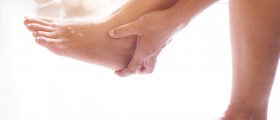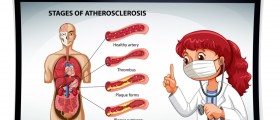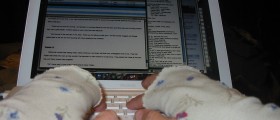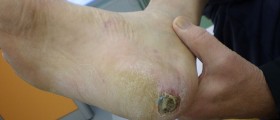Tingling in Your Legs and Arms
Women generally have worse blood circulation than men, but it doesn’t have to mean that woman are more prone to have tingling in legs and arms since bad blood circulation is not the only cause of it. Sometimes, it could be caused by nerve damage and people with tingling legs and arms may find it a bit difficult to walk or run. They could experience this in any time of the day or night, and it can last from couple of minutes to couple of hours. This sensation is usually described as pricking pins and needles.

Causes
Sometimes, the use of certain medications can lead you to have tingling in legs and arms. But there are many more causes of it and some of them include a condition called peripheral neuropathy. It is a condition that causes the damage of your nerves in legs and arms and you can start feeling pain. Patients who suffer from rheumatoid arthritis or diabetes are prone to have peripheral neuropathy. Sometimes, you can have your legs and arms so numb so you don`t feel anything but burning sensation.
However, this painful sensation could be also related to traumatic experiences such as exposure to toxic materials, certain medicines, or accidents. Another cause of tingling legs and arms is compromised blood flow, which means that leg arteries are halfway blocked because of the cholesterol, which disables the blood to circulate normally through the leg.
The blood flow in the lower extremities can get worse and it causes and triggers the sensation of tingling in legs and arms, usually while you are taking a walk. You can have your circulation problems due to the unusual places where you rest your legs. The blood circulation must be constant and equal in every part of your body. Having your legs or arms under some heavy objects can cause your blood flow malfunction and you will get tingling in your legs and arms.
Sciatica is also one of the causes for you to have tingling in your arms and legs. The sciatic nerve, which expends itself from the spinal cord over hip and buttock area and finishes in the lower part of your leg, usually leads to pain in your back, which is followed by tingling in legs and arms. The pain is triggered by health problems such as spondylolisthesis or herniated disc.
Next cause of tingling in legs and arms is fibromyalgia, a condition when patient is having pains in ligaments and muscles, or feeling of stiffness in joints. Older people are prone to suffer from fibromyalgia, but some traumatizing physical experiences could cause it too.
One more cause for tingling in legs and arms is multiple sclerosis, a condition of damaged covering of the nerves which leads to improper function of the nerves. People suffering from multiple sclerosis can also experience pain in legs and arms and they should become more active in a physical way. In any case of the above listed causes, you should get the diagnosis and then the appropriate treatment.
- A review of systems was otherwise negative or normal. Past medical history was notable for hyperlipidemia, treated with atorvastatin 20 mg daily. There was no family history of neurologic or autoimmune disease. Vital signs and general physical examination were normal.
- Neurologic examination was notable for normal mental status and cranial nerve examinations. Gait, coordination, and the remainder of the motor examinations were normal. Sensation was mildly reduced to light touch circumferentially throughout both arms, in patches over the anterior chest, and over the posterior thighs, with preserved sensation to vibration, pinprick, and temperature.
- The Romberg sign was not present. Deep tendon reflexes were normal. The plantar response was flexor bilaterally.
- A key clinical feature of this patient's presentation is the relative lack of early major clinical deficits despite such an extensive longitudinal spinal cord lesion, which favors neurosarcoidosis, differing from neuromyelitis optica spectrum disorder (NMOSD) pathophysiology (which typically causes extensive tissue destruction all along the lesion, and profound early deficits).
- CNS involvement from sarcoidosis occurs in approximately 5%–15% of sarcoidosis patients and can manifest with variable combinations of leptomeningitis, meningoencephalitis, pachymeningitis, optic neuropathy, other cranial neuropathies, hypothalamic/pituitary involvement, myelitis, or radiculitis. While sarcoidosis is classically and formally described as a multisystem disease, about 10%–20% of neurosarcoidosis cases have seemingly exclusive CNS involvement.
- The inflammation of sarcoidosis is characterized by well-formed, noncaseating (nonnecrotizing) granulomas containing monocytes and macrophages, T lymphocytes, B lymphocytes, and fibroblasts, among other cell types.
- Several proposed diagnostic approaches to neurosarcoidosis have been used in the literature over the years. Updated consensus diagnostic criteria for neurosarcoidosis were published in 2018. Diagnosis of “definite” neurosarcoidosis is supported by a confirmatory biopsy from the nervous system consistent with sarcoidosis in the context of a consistent clinical phenotype and rigorous exclusion of other causes, particularly infection and malignancy.
- medlineplus.gov/ency/article/003206.htm
- medlineplus.gov/ency/article/000593.htm
- Photo courtesy of pure julia by Unsplash: unsplash.com/photos/x96O3MVh2xU

















Your thoughts on this
Loading...